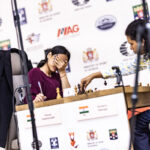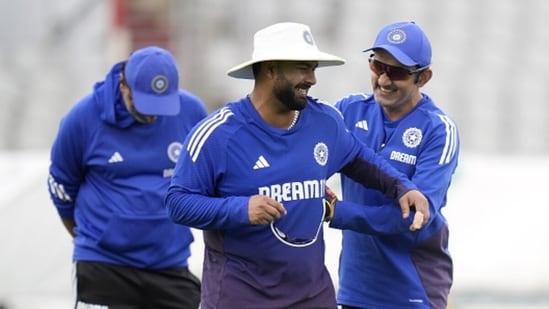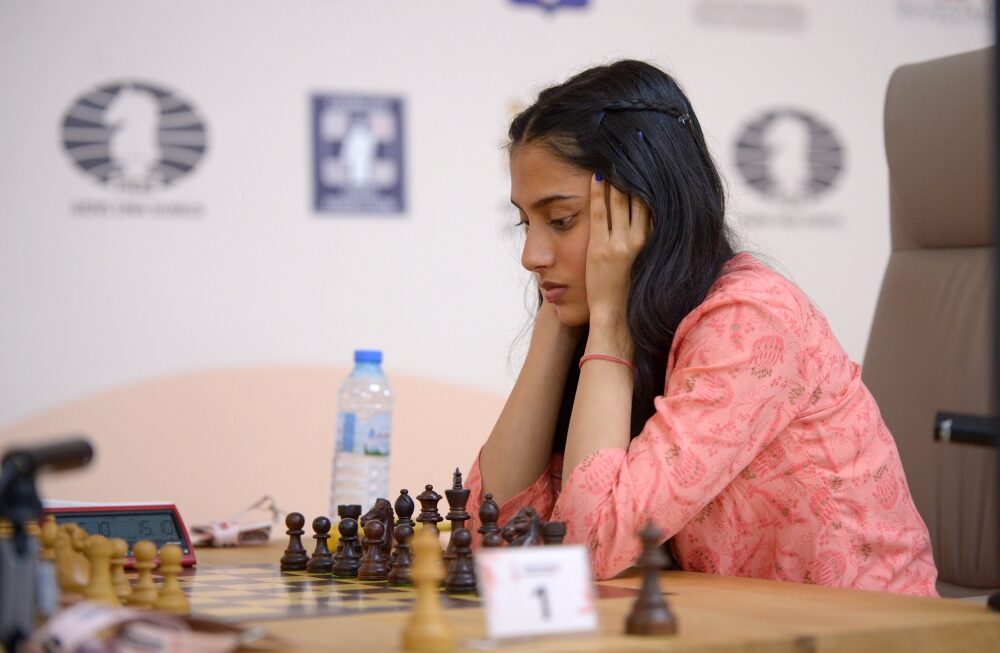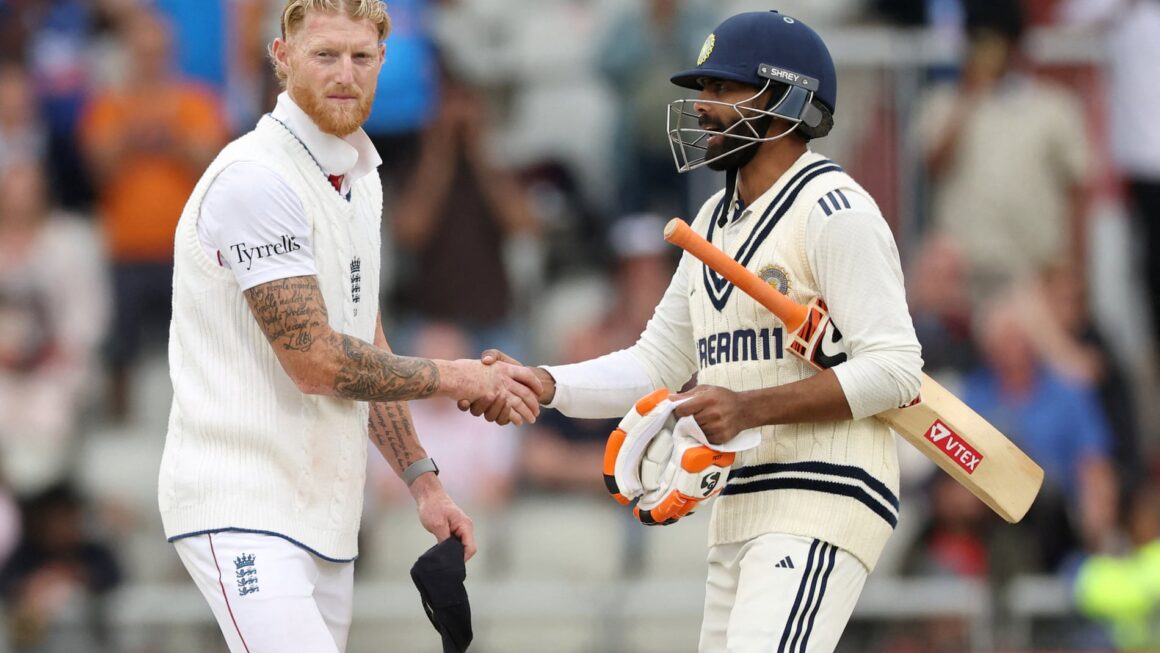Rishabh Pant’s Heroic Display: The Fracture That Defined Courage in Manchester
The Defining Moment of Courage: Pant’s Fractured Foot Heroics
Rishabh Pant’s Heroic Display: We witnessed one of the most extraordinary displays of courage in modern cricket when Rishabh Pant battled through excruciating pain to continue batting with a fractured foot during the fourth Test match against England at Old Trafford, Manchester. This remarkable incident not only showcased the wicketkeeper-batsman’s incredible mental fortitude but also highlighted the emotional bond between coach Gautam Gambhir and his players.
The incident occurred during the first day of play when Pant, batting on 37 off 48 balls, attempted a reverse sweep off Chris Woakes and inside-edged the ball onto his right foot. The immediate swelling and his visible inability to put weight on the foot sent alarming signals throughout the Indian camp. What followed was a testament to the human spirit and the lengths athletes will go to serve their country.
The Injury: Fifth Metatarsal Fracture Details
We must understand the severity of Pant’s injury to fully appreciate his heroic return to the crease. Medical scans revealed a fracture in the fifth metatarsal of his right foot, an injury that typically requires immediate rest and medical intervention. The fifth metatarsal is a crucial bone in the foot’s structure, responsible for weight distribution and balance during movement.
The injury mechanism occurred when the hard cricket ball struck Pant’s front foot during his attempted reverse sweep. The impact was severe enough to cause immediate swelling and intense pain, forcing him to retire hurt and be transported off the field via a golf cart. The BCCI medical team immediately arranged for comprehensive scans to assess the damage.
Medical experts typically recommend six weeks of rest for such fractures, making Pant’s decision to return to bat even more remarkable. The pain associated with a metatarsal fracture is described as sharp and constant, particularly when bearing weight or attempting to move the affected foot.
Gautam Gambhir’s Emotional Response and Support
We observed the deep emotional connection between coach Gautam Gambhir and Rishabh Pant when the former Delhi captain embraced his protégé after witnessing his courageous batting display. Sources close to the team revealed that Gambhir was visibly moved by Pant’s determination to continue playing despite the fracture.
The coaching staff initially explored the possibility of Pant batting with painkillers, consulting extensively with the BCCI medical team. However, medical professionals advised against this approach, citing potential long-term complications and the risk of aggravating the injury further. Despite these medical concerns, Pant’s resolve remained unshaken.
Gambhir’s tactical acumen was evident in his handling of the situation. We understand that he maintained constant communication with the medical team while respecting Pant’s personal decision to return to the crease. The emotional embrace between coach and player after Pant’s innings symbolized the mutual respect and understanding that defines their relationship.
The Heroic Second Day Performance
We witnessed cricket history when Pant hobbled out to bat on the second day, receiving a standing ovation from the Old Trafford crowd. His determination to continue playing despite the fractured foot demonstrated the warrior spirit that has made him one of India’s most valuable players.
Batting through excruciating pain, Pant scored a magnificent 54 runs off 75 balls, notching up his 18th Test fifty. Every run was a testament to his mental strength and physical endurance. The innings included several boundaries that showcased his natural aggressive instincts, even while severely compromised physically.
The technical adjustments Pant made to accommodate his injury were remarkable. We observed how he modified his stance and footwork, relying more on his upper body strength and timing rather than his usual dynamic movement patterns. His ability to maintain concentration and execute shots while managing intense pain demonstrated exceptional mental fortitude.
Medical Team Concerns and Management Decisions
We must acknowledge the complex medical and ethical considerations surrounding Pant’s continued participation. The BCCI medical team faced the challenging task of balancing player safety with competitive requirements. Their professional assessment ultimately ruled out the use of painkillers due to potential masking of pain signals that serve as natural protective mechanisms.
The medical staff’s decision-making process involved multiple consultations and continuous monitoring of Pant’s condition. We understand that they established strict protocols for his batting, including regular pain assessments and immediate withdrawal criteria if his condition deteriorated.
The team management’s approach reflected modern sports medicine principles, where player welfare takes precedence over short-term competitive gains. However, Pant’s personal determination and the critical match situation created a unique scenario requiring careful navigation between safety and sporting ambition.
Impact on Team Dynamics and Morale
We observed how Pant’s courage had a profound impact on the entire Indian squad. His teammates drew inspiration from his sacrifice, elevating their own performance levels. The incident created an emotional rallying point that strengthened team unity and resolve.
The psychological impact extended beyond the immediate playing group. We noted how the support staff, management, and even opposition players acknowledged Pant’s exceptional bravery. Such moments transcend competitive boundaries and remind us why sport holds such a special place in human culture.
Shubman Gill, the team captain, was visibly moved by his teammate’s dedication. The leadership group’s response to the situation demonstrated mature decision-making and collective responsibility for player welfare while respecting individual choices.
Technical Analysis of Pant’s Modified Batting Approach
We analyzed how Pant adapted his batting technique to accommodate the fractured foot. His usual aggressive footwork was necessarily curtailed, forcing him to rely more heavily on hand-eye coordination and upper body strength. The modifications included a more static stance and reduced movement toward the ball.
Despite these limitations, Pant maintained his characteristic aggressive intent. We observed how he selected his scoring opportunities more carefully, focusing on deliveries that didn’t require significant foot movement. His boundary-hitting ability remained largely intact, demonstrating remarkable adaptability under extreme physical duress.
The innings provided valuable insights into Pant’s technical foundation and mental approach to batting. We saw how his natural ball-striking ability and quick decision-making compensated for reduced mobility, highlighting the depth of his cricketing skills beyond pure athleticism.
Historical Context: Great Injured Performances
We place Pant’s heroics within the broader context of cricket’s most courageous injured performances. Historical precedents include Anil Kumble’s remarkable ten-wicket haul with a broken jaw and numerous instances of players continuing despite significant injuries.
Pant’s performance ranks among the most memorable for its combination of physical adversity and quality of execution. We recognize that such moments become defining characteristics of sporting legends, inspiring future generations and establishing lasting legacies.
The comparison with legendary injured performances adds gravitas to Pant’s achievement. We understand that these moments transcend individual statistics, becoming part of cricket’s rich tapestry of courage and determination.
Long-term Implications for Pant’s Career
We must consider the potential long-term impact of this injury on Pant’s career trajectory. While his immediate courage was admirable, the medical implications require careful management to ensure sustained playing ability. The decision to continue batting, while heroic, could have ramifications for his future fitness and form.
The BCCI medical team’s recommendation of six weeks’ rest indicates the seriousness of the injury. We anticipate that Pant’s rehabilitation will require comprehensive physiotherapy and gradual return-to-play protocols to prevent re-injury or complications.
Career longevity considerations become paramount when evaluating such decisions. We acknowledge that while the immediate impact was positive for team morale and match situation, the long-term health implications must be carefully monitored and managed.
Public and Media Response
We observed unprecedented appreciation from cricket commentators, former players, and fans worldwide for Pant’s courageous display. Social media platforms were flooded with praise for his determination and fighting spirit. The incident generated significant positive coverage for Indian cricket.
Sanjay Manjrekar’s comment that such moments “will be remembered for 50 years” captured the sentiment of many cricket observers. We recognize that these defining moments become part of cricket folklore, inspiring future generations of players and fans.
The global cricket community’s response highlighted the universal appeal of sporting courage. We noted how opposition fans and players joined in acknowledging Pant’s exceptional bravery, demonstrating sport’s power to unite people across competitive divides.
Team Management Philosophy Under Gambhir
We examine how this incident reflects Gautam Gambhir’s coaching philosophy and man-management approach. His emotional response to Pant’s courage revealed the deep personal connections he builds with players, extending beyond tactical and technical guidance.
Gambhir’s background as a former captain and his understanding of pressure situations informed his handling of the crisis. We observe how his experience of playing through injuries and difficult circumstances enabled him to appreciate and support Pant’s decision while ensuring medical protocols were followed.
The coaching approach demonstrated under these circumstances provides insights into Gambhir’s leadership style. We recognize his ability to balance competitive demands with player welfare, creating an environment where such heroic displays are possible while maintaining professional medical standards.
Future Preparedness and Injury Management
We anticipate that this incident will influence future injury management protocols within Indian cricket. The unique circumstances created valuable learning opportunities for medical staff, team management, and player welfare procedures.
Enhanced preparation for similar situations might include more detailed contingency planning for key players’ injuries during crucial matches. We expect the BCCI to review and potentially modify existing protocols based on lessons learned from this experience.
The psychological aspects of playing through injury will likely receive increased attention in future training and preparation programs. We recognize the need to balance mental toughness development with appropriate injury management education.
flowchart TD
A[Pant attempts reverse sweep] --> B[Ball strikes right foot]
B --> C[Immediate pain and swelling]
C --> D[Retires hurt, taken for scans]
D --> E[Diagnosis: Fifth metatarsal fracture]
E --> F[Medical team consultation]
F --> G[Six weeks rest recommended]
G --> H[Pant decides to return]
H --> I[Day 2: Hobbles to crease]
I --> J[Standing ovation from crowd]
J --> K[Scores 54 runs off 75 balls]
K --> L[Gambhir's emotional embrace]
L --> M[Global recognition for courage]
M --> N[Legacy moment in cricket history]
Conclusion: A Moment That Transcends Cricket
We conclude that Rishabh Pant’s fractured foot heroics at Old Trafford will be remembered as one of cricket’s defining moments of courage. The incident perfectly encapsulated the spirit of competitive sport, where individual sacrifice serves collective goals and creates inspiration that extends far beyond the playing field.
Gautam Gambhir’s emotional embrace of his player after such a display of courage highlighted the human elements that make sport so compelling. We recognize that such moments create lasting bonds between coaches and players, forming the foundation of successful team cultures.
The incident serves as a powerful reminder of why cricket continues to capture imaginations worldwide. We celebrate not just Pant’s individual courage, but the collective response of teammates, opponents, and fans who recognized and honored his extraordinary sacrifice for the team and country.













